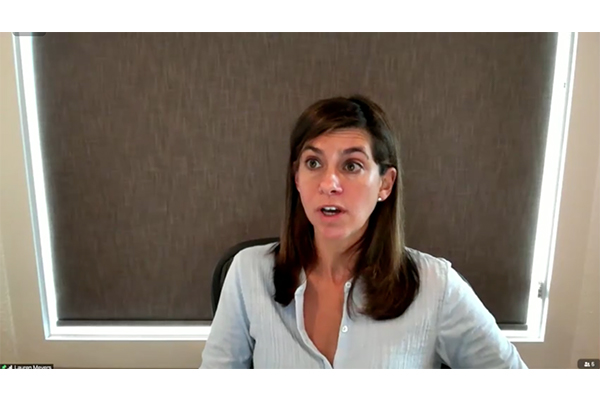The University hosted the first day of the UT COVID-19 Conference on Tuesday, showcasing UT researchers’ COVID-19 projects.
Tuesday’s keynote speaker was Lauren Ancel Meyers, the executive director of the UT COVID-19 Modeling Consortium. Tuesday’s conference also included panels on the future of education during COVID-19, health communication, academic medicine, and environmental and technological convergence.
“When we woke up in January to arguably the greatest human threat of our lifetime, UT provided the platform for us to bring the best science to the front line,” Meyers said.
Meyers said her team estimated the spread of the COVID-19 virus in China using global air travel data, rail and ground travel data, and the location of the first 19 cases outside of China. She said they estimated that by the time of Wuhan’s lockdown, which began in January, there were probably over 12,000 cases that had gone undetected, and COVID-19 had likely spread to hundreds of other cities in China. At this time, China was reporting 425 confirmed cases, she said.
The team also conducted a second study, which analyzed 468 case reports from 18 local public health departments in China, Meyers said. She said this data showed that the new coronavirus spread twice as quickly as the 2003 SARS virus.
“The most alarming observation was that there was a good handful of case reports where the infectee actually started feeling symptoms before the infector, meaning that infector was spreading before they felt sick,” Meyers said. “This was the first evidence of silent transmission.”
Meyers said the team received a request from the White House Coronavirus Task Force in March asking them to predict how many people would die by the end of the year. The team presented three plausible scenarios, she said. Meyers said if nothing is done to mitigate the threat, 1 million people could die from COVID-19 in the United States alone, and if the U.S. began a permanent shelter-in-place order, the deaths could be kept under 50,000.
“If we do something in between, which is essentially the roller coaster that we have been on, we projected there would be somewhere between 200,000 and 400,000 deaths in the United States, and sadly we're on track for those numbers,” Meyers said.
Meyers and her team also analyzed COVID-19 spread in Seattle, she said. Meyers said her team used a previous analysis of flu test swabs and flu patterns in Seattle to estimate that there were likely around 9,000 COVID-19 cases in early March, when 245 cases were officially reported. They also deduced that COVID-19 started spreading in Seattle between late December and Jan. 15, she said.
The consortium tracks COVID-19's local reproduction number, which estimates how the virus is spreading in the community. If the number is greater than one, the pandemic is growing, but if the number is less than one, the pandemic is dissipating, Meyers said. The reproduction number for the Austin-Round Rock Metropolitan Statistical Area is 1.01 as of Tuesday, according to the model.
“Now we're at a time where we see the (Austin) reproduction number creeping up, perhaps because we're growing weary, because our restaurants are at 75% capacity, because people are taking risks, and we're at a very precarious moment,” Meyers said. “Texas as a whole is on the brink.”





















